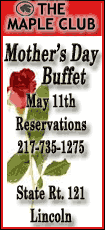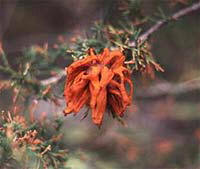 The main products used for broadleaf weed control in lawns are
2,4-D, MCPP, dicamba, a combination of those three products, and
triclopyr. The main products used for broadleaf weed control in lawns are
2,4-D, MCPP, dicamba, a combination of those three products, and
triclopyr.Let's start with the triclopyr since it's probably
the easiest to discuss. Its place in weed control is for
hard-to-control weeds and woody plants. It also improves control
of violets. It can be added to one or more other chemicals to
provide broad-spectrum control. Some blends now contain
trichlopyr, so check the label.
The old standby is 2,4-D. It is good on carpetweed, chicory,
dandelion, lambsquarters, plantains and wild carrot. MCPP is
good on chicory, lambsquarters and white clover. Dicamba is good
on black medic, chickweeds, chicory, dandelion, dock, henbit,
knotweed, lambsquarters, pearlwort, purslane, red sorrel,
thistles, white clover, wild carrot and yarrow. The combination
of all three products will pick up all of those listed for the
individual products, plus a few more such as mallow, speedwell
and wild onion. The combinations are sold under many different
trade names, so check the active ingredient list for ones you
need.

My annual disclaimer for application of these types of
products is: "Beware of potential drift from these products."
Not only can the spray move under windy conditions while you are
spraying, but particularly with dicamba, the products can drift
as a vapor for up to two weeks after spraying in hot and humid
conditions.
Cedar apple rust
Cedar apple rust is caused by a fungus that attacks two
different groups of trees. The first group is apples and crab
apples, and the second is juniper and eastern red cedar. In
order to survive, the fungus must "move" from one group of host
to the other.
[to top of second column]
 |

 On juniper, or eastern red cedar, small (three-eighths to 1 3/16
inches in diameter) galls develop throughout the tree on needles and
small twigs. When mature, these galls swell considerably and
repeatedly produce orange, jello-like horns during rainy spring
weather. As spring rains subside, the galls die, which may cause
death of the twig from the gall to the tip. On juniper, or eastern red cedar, small (three-eighths to 1 3/16
inches in diameter) galls develop throughout the tree on needles and
small twigs. When mature, these galls swell considerably and
repeatedly produce orange, jello-like horns during rainy spring
weather. As spring rains subside, the galls die, which may cause
death of the twig from the gall to the tip.
On susceptible crab apples and apples, tiny yellow spots appear
on the leaves after infection in the spring. As the spots mature,
they become yellow-orange and swollen, with a red border, and
develop tiny black dots in the center of the lesion. By midsummer,
small cup-like structures with tubes are visible on the undersides
of mature leaf lesions. The fungus may also infect fruit and tender
twigs of very susceptible crab apple and apple varieties.

The entire life cycle takes about two years, with a year on each
host. The apple phase is easily recognized on the leaves and fruit
by just about anybody who has grown apples. The teliospore phase on
the cedars is quite striking but is noticed much less frequently.
Fungicides in spray programs do a good job of controlling the
apple phase, while the cedar phase is best controlled by buying
resistant varieties. Some homeowners cut the galls off before they
break out into the "orange blob," but the result is the same: You're
going to likely lose the tips on those branches.
[By
JOHN FULTON,
University of Illinois Extension, Logan County] |